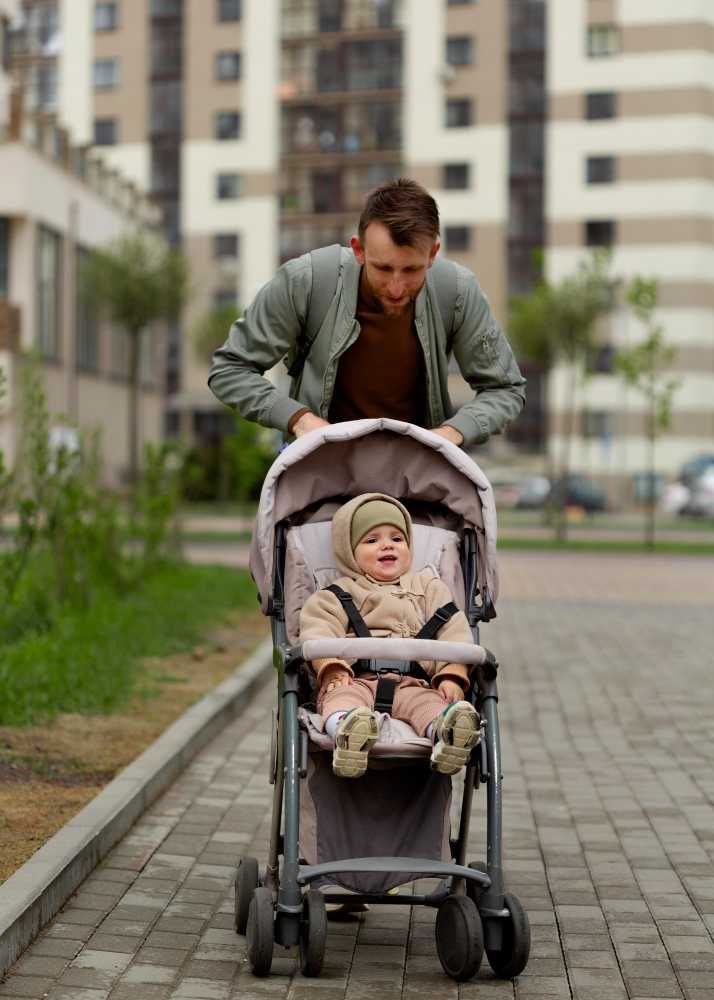Why Your Toddler Screams in Pain When Changing Diaper

Changing diapers is a routine task for parents of toddlers. It’s essential for keeping your toddler clean and comfy. Nonetheless, if you’ve cared for a toddler, you probably know diaper changes can sometimes turn into a battle as they scream in pain or distress. While this behavior can be challenging and frustrating, it’s crucial to understand why toddlers may react this way during diaper changes.
By identifying the root cause and implementing the right strategies, you can transform diaper changes from painful episodes into more pleasant and cooperative routines. In this article, we delve into the common reasons why a toddler screams in pain during diaper changes and offer practical solutions to ease this often challenging task:
Understanding the Toddler Stage
Before delving into the reasons for diaper change resistance, understanding the developmental stage your two-year-old is going through is essential. Two-year-old toddlers are in a period marked by rapid growth and significant cognitive, emotional, and social development. During this time, they are developing a sense of independence and autonomy, which can lead to some behavior challenges, including diaper change resistance.
Reasons for Diaper Change Resistance
Desire for Independence
One of the primary reasons for diaper change resistance in two-year-olds is their growing desire for independence. Toddlers are beginning to assert themselves and seek control over their actions and decisions. They may view diaper changes as an intrusion into their newfound autonomy, leading to resistance.
Sensory Sensitivity
Some children have heightened sensory sensitivity, making them more averse to certain tactile sensations. The feeling of a dirty diaper and the process of changing it can be uncomfortable or distressing for these children, leading to resistance.
Fear of the Unknown
Two-year-olds may not fully understand the diaper-changing process and can be frightened by the unfamiliar aspects of it. The sounds, sights, and sensations of diaper changes can be intimidating, causing resistance.
Discomfort or Pain
Diaper rash or other skin irritations can make diaper changes painful for your child. They may associate the process with discomfort and, as a result, resist it.
Boredom or Restlessness
Two-year-olds are full of energy and curiosity. The task of lying still for a diaper change can be perceived as boring and frustrating. They may resist because they’d rather be exploring or playing.
Transition to Potty Training
At the age of two, many parents start thinking about transitioning their child from diapers to potty training. Your toddler might be aware of this impending change and resist diaper changes as a way to express their readiness for this transition.
Communication Barriers
Two-year-olds are developing their language skills, but they may not be able to effectively communicate their discomfort or preferences. This can lead to frustration and resistance when they cannot express their needs.
Why Your Toddler Screams In Pain When Changing Diapers
It can be distressing when your toddler screams in pain when changing diapers. Understanding the reasons behind this behavior is crucial to addressing the issue and ensuring your child’s comfort. Below are some common reasons why your toddler screams in pain when changing diapers:
Diaper Rash
Diaper rash is probably the most common reason your toddler experiences pain when changing diapers. Diaper rash occurs when diaper area skin becomes irritated due to prolonged exposure to moisture, friction, and chemicals in diapers. It can lead to redness, swelling, and even open sores, making each diaper change painful for your toddler.
What to do: You can alleviate diaper rash by keeping the diaper area clean and dry. Clean using fragrance-free baby wipes or warm water and soft cloth. Consider applying diaper rash cream or ointment recommended by your pediatrician to create a protective barrier on the skin. Let your child go without a diaper for short periods to allow the skin to breathe and heal.
Sensitivity to Diapering Products
Some toddlers may have sensitive skin and react to the materials or chemicals present in certain diapering products, such as wipes or disposable diapers. Sensitivity can cause discomfort and pain during diaper changes.
What to do: Switching to hypoallergenic diapering products can minimize the chances of skin irritation. If you notice a particular product causing discomfort, discontinue its use immediately.
Tight or Ill-fitting Diapers
When diaper is too tight or ill-fitting, your toddler may feel discomfort and pain. Poorly fitting diapers can lead to chafing, irritation, and a sense of constriction, making diaper changes an unpleasant experience for your child.
What to do: Consider using the ideal diaper size for your toddler’s age and weight. Adjusting the fit such that it’s snug yet not too tight is equally important. Some toddlers may benefit from switching to cloth diapers, which can provide a more comfortable fit.
Urinary Tract Infections (UTIs)
Urinary tract infections can cause pain and discomfort during urination. This pain can be exacerbated when the sensitive diaper area is cleaned when changing diapers.
What to do: Consider consulting your pediatrician whenever you suspect your toddler has a urinary tract infection. They will perform tests and prescribe appropriate treatment.
Teething
Teething can be painful and uncomfortable for toddlers. The discomfort may be more pronounced when changing diapers because of the pressure applied to the lower abdominal area.
What to do: Offering your toddler a teething toy or a cool, damp washcloth to chew on before and after diaper changes can alleviate teething discomfort. Be gentle and patient during diaper changes to minimize any added stress.
Allergies or Skin Conditions
Toddlers can develop allergies or skin conditions that cause discomfort and pain when you touch or clean the diaper area.
What to do: Consult your pediatrician if you suspect allergies or skin conditions. They can provide guidance and recommend appropriate treatments or medications to alleviate discomfort.
Behavioral Factors
Sometimes, toddlers may scream or resist during diaper changes due to behavioral factors. They may not want to stop playing or engage in the diaper-changing routine. This resistance may be more of a protest than actual physical pain, but it can still be distressing for both you and your child.
What to do: Try to make diaper changes more engaging and less of a chore. Provide toys or sing songs to distract your child. Offering small rewards or incentives, such as a sticker or a favorite snack, after the diaper change can also help motivate cooperation.
Fear or Anxiety
Toddlers can develop fear or anxiety about diaper changes, especially if they have had negative experiences or if they perceive the process as uncomfortable. This fear can lead to screaming or resistance.
What to do: Reassure your child during diaper changes by using a calm and comforting tone. Maintain a consistent and gentle approach to build trust. Creating a positive association with diaper changes can help reduce fear and anxiety over time.
When your toddler screams in pain when changing diapers, the first step to addressing the issue is understanding the potential causes of their pain and discomfort. Addressing the specific reason behind their distress can make the process more comfortable for your toddler and create a positive diaper-changing experience. If you are unsure about the cause of the pain or if it persists, consult your pediatrician for guidance and support.
Managing Diaper Change Resistance
Now that we’ve explored some of the reasons behind diaper change resistance let’s discuss practical strategies to help manage this challenging behavior:
Be Empathetic and Understanding
Understanding your child’s perspective is crucial when dealing with diaper change resistance. Recognize this behavior is part of their natural development by showing empathy and validating their feelings.
Create a Routine
Establishing a consistent diaper-changing routine can help your child know what to expect, reducing anxiety and resistance. Try to change their diaper at the same times each day, such as after meals or before bedtime.
Offer Choices
Give your child a sense of control by offering them choices within reasonable limits. For example, you can ask, “Do you want to choose a diaper or a wipe?” This allows them to make small decisions and feel more involved in the process.
Distraction and Entertainment
Toddlers often resist diaper changes because they find them boring. Provide distractions to keep them engaged during the process. You can use toys, books, or even sing songs to make it more enjoyable.
Make It a Game
Turn diaper changes into a playful activity. Sing a silly diaper-changing song or play peek-a-boo. This can make the process less intimidating and more enjoyable for your child.
Be Quick and Efficient
Try to make diaper changes as quickly and efficiently as possible. Minimize downtime by having all the necessary items ready beforehand so you can complete the change swiftly.
Use Positive Reinforcement
Praise and encourage your child when they cooperate during diaper changes. Offer small rewards or words of affirmation like, “You did a great job staying still!”
Maintain a Calm and Patient Demeanor
Your child can pick up on your emotions, so it’s essential to remain calm and patient during diaper changes. If you become frustrated, it can escalate the resistance. Take deep breaths and stay composed.
Provide Comfort
If your child is experiencing discomfort due to diaper rash or skin irritation, address it promptly. Use diaper creams or ointments to alleviate any pain or discomfort. This can make diaper changes a more pleasant experience for your child.
Gradual Transition to Potty Training
If you believe your child is ready for potty training, consider starting the transition. Gradually introduce the concept of using the potty and encourage your child to be a part of the process. This can help them feel more in control of their bodily functions.
Maintain Good Hygiene Habits
Emphasize the importance of good hygiene and staying clean and dry for your child. Help them understand the purpose of diaper changes and how it contributes to their well-being.
Seek Professional Advice
If your child’s diaper change resistance is persistent and causes you significant concern, it may be a good idea to consult a pediatrician or child psychologist. They can provide further guidance and support.
Bottom Line
Understanding why your toddler screams in pain when changing diapers is essential to providing the best care. A toddler’s distress when changing diapers often stems from a combination of factors, including sensitive skin, temperature sensitivity, a desire for autonomy, and a lack of understanding. Taking these factors into account and following the practical tips outlined in this article can create a more positive and comfortable diaper-changing experience. Additionally, being attuned to a child’s unique preferences and sensitivities can help tailor the diaper-changing process to their individual needs, fostering a happier and more cooperative atmosphere during this routine task.





